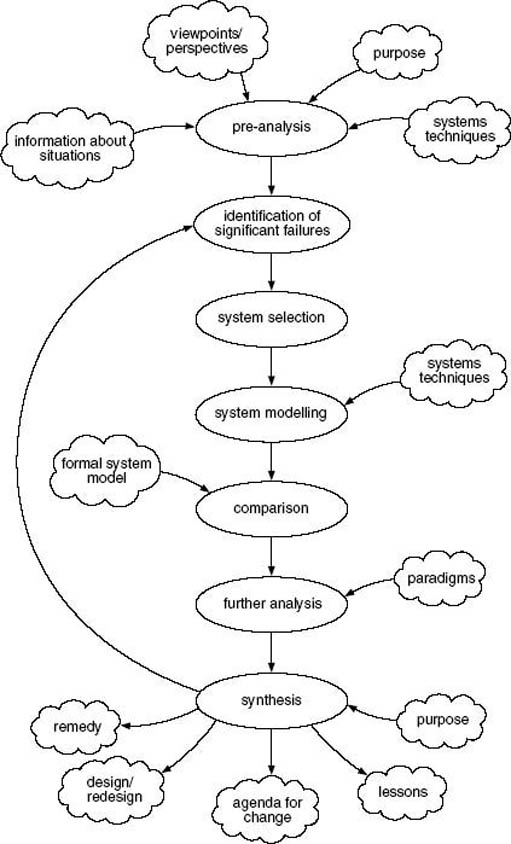Open University systems failures method
In their most recent book, Learning from Failure, Joyce Fortune and Geoff Peters describe the 20 years of experience, which has produced the systems failures method (SF-method). Their motivation was to discover the ways failures in organisations can best be understood. They observe that one of the best ways people learn is from their mistakes, yet few organisations foster attempts to learn from people's mistakes. They believe this absence of learning can be attributed to a blame culture and the absence of robust methods for the study of failure. Their aspiration is to enable personnel managers, software engineers, teachers and the like to bring complexity and connectivity to the surface through the application of the SF-method (Figure 43).

SF-method involves a systemic interpretation of a failure and its context (e.g. the CSA in the child support case study), which could lead to learning and action. The process involves engaging with a situation using a variety of diagramming techniques to depict it in a way that improves the initial understanding and enables a system or systems that can be said to lie at the core of the failure to be conceptualised.
This system is then modelled in systems terms and this model of the ‘real world’ situation is compared with an idealised model of a robust system capable of purposeful activity without failure. Insights and strategies to avoid future failure arise through the process of comparing models of the ‘real world’ situation and the idealised model. The method allows for iteration as shown in Figure 43. Examples of how the method has been used to study failure can be found in Fortune and Peters (1995).
